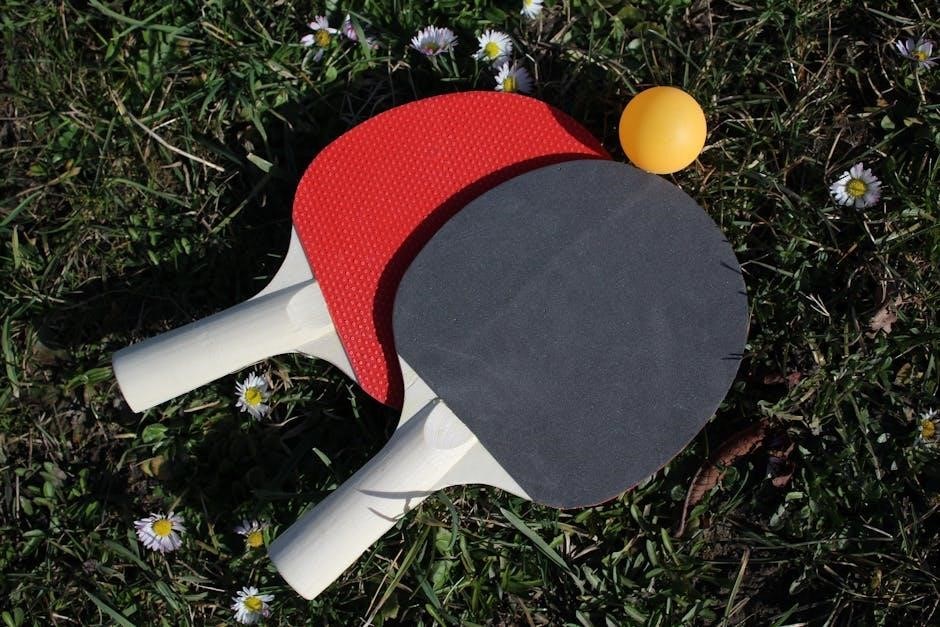Paddle shifters offer modern convenience and speed, while manual transmissions provide driver engagement. Both systems cater to different preferences, balancing ease, control, and driving enjoyment.
Overview of Paddle Shifters
Paddle shifters are steering wheel-mounted controls that allow drivers to manually change gears in automatic or dual-clutch transmissions. They provide a balance between convenience and driver engagement, enabling quick shifts without a clutch pedal. Paddle shifters are often paired with automatic transmissions, offering a semi-manual driving experience; Unlike traditional manual transmissions, they simplify shifting by eliminating the need for a clutch and gear lever. Paddle shifters are popular in modern vehicles, appealing to drivers who want more control without the complexity of a manual gearbox. They are particularly useful in performance driving, where precise gear changes enhance responsiveness. However, some enthusiasts find them less engaging than manual transmissions, as they lack the tactile feedback of a clutch and gearshift combination. Despite this, paddle shifters remain a versatile and practical option for many drivers.
Overview of Manual Transmissions
Manual transmissions require drivers to manually change gears using a clutch pedal and gearshift. This system provides direct control over gear selection, fostering a deeper connection between the driver and the vehicle. Manual transmissions are often associated with sporty, engaging driving experiences. They rely on the driver’s skill to coordinate clutch presses and gearshift movements, making them less forgiving for inexperienced drivers. Despite the learning curve, manuals are praised for their simplicity, cost-effectiveness, and ability to maximize engine performance. However, their popularity has declined with the rise of automatic and paddle-shift transmissions, which offer greater convenience. For enthusiasts, the tactile feedback and precision of manual transmissions remain unmatched, making them a preferred choice for driving purists.

How Paddle Shifters Work
Paddle shifters enable manual gear changes without a clutch, using electronic signals to control the transmission. They offer quick, smooth shifts, enhancing driving precision and responsiveness.
Basic Mechanism of Paddle Shifters
Paddle shifters operate by using sensors and electronic controls to manage gear changes. When a driver pulls a paddle, it sends a signal to the transmission’s control unit, which engages the appropriate gear. Unlike manual transmissions, paddle shifters eliminate the need for a clutch pedal, making the process simpler. The system relies on advanced software to optimize shift timing and torque delivery, ensuring smooth transitions. This mechanism allows for faster and more consistent shifting compared to traditional manual transmissions, while also reducing driver fatigue during extended drives or in heavy traffic conditions.
Types of Paddle Shifter Systems
Paddle shifter systems vary, with the most common being dual-clutch transmissions and traditional automatics. Dual-clutch systems use two clutches for rapid gear changes, ideal for performance driving. Automatic transmissions with paddle shifters rely on a torque converter and electronic controls for smooth shifts. Some vehicles feature continuously variable transmissions with paddle-shifted simulated gears. Additionally, sequential manual gearboxes use paddles for clutch-less shifting, often found in high-performance cars. Each type offers unique benefits, catering to different driving styles and vehicle purposes, from everyday commuting to racing.

How Manual Transmissions Work
Manual transmissions require drivers to manually change gears using a clutch and gearshift, providing full control and engaging the driver for a more connected driving experience.
Basic Mechanism of Manual Transmissions
A manual transmission operates by requiring the driver to manually change gears using a clutch pedal and a gearshift. The clutch pedal disengages the engine from the transmission, allowing the driver to shift gears without grinding. When the clutch is pressed, the engine’s power is disconnected, enabling smooth gear transitions. Releasing the clutch reconnects the engine to the transmission, resuming power delivery. The driver must coordinate the clutch, accelerator, and gearshift to maintain smooth acceleration and avoid jerking. This hands-on process gives the driver full control over gear selection, making it a preferred choice for those who enjoy an engaging driving experience. The mechanism relies on the driver’s skill and coordination, making it distinct from automatic or paddle-shifter systems.
Components of a Manual Transmission

A manual transmission consists of several key components that work together to enable gear changes. The clutch pedal is used to disengage the engine from the transmission, allowing the driver to shift gears. The gearshift, located on the center console or floor, is connected to the transmission and selects the desired gear. Inside the transmission, gears, bearings, and shafts facilitate power transfer. The clutch disc and pressure plate connect and disconnect the engine from the transmission. These components rely on the driver’s input to function, requiring coordination between the clutch, accelerator, and gearshift. This mechanical simplicity contributes to the durability and lower cost of manual transmissions compared to automatic or paddle-shifter systems. The direct connection between driver and vehicle is a hallmark of manual transmissions.

Advantages of Paddle Shifters
Paddle shifters offer faster and more consistent shifting, enhancing performance. They are easier to use and more forgiving, reducing the need for a clutch pedal.
Faster and More Consistent Shifting
Paddle shifters excel in delivering rapid and precise gear changes, particularly in performance-driving scenarios. They eliminate the need for manual clutch operation, reducing the time and effort required to shift gears. This results in faster acceleration and smoother transitions, especially when compared to traditional manual transmissions. Paddle shifters are also more consistent, as they rely on electronic controls rather than human input, minimizing errors during aggressive driving. For instance, in racing or track environments, paddle shifters allow drivers to maintain focus on steering and braking while shifting gears seamlessly. This consistency is a significant advantage over manual transmissions, where shifting speed and accuracy can vary depending on the driver’s skill level. Overall, paddle shifters provide a more efficient and reliable shifting experience, making them ideal for drivers prioritizing speed and precision.
Ease of Use and Forgiving Nature
Paddle shifters are notably easier to use compared to manual transmissions, as they eliminate the need for clutch operation and coordination. This makes them more accessible to drivers of all skill levels, especially in heavy traffic or urban driving conditions. Paddle shifters are also more forgiving, as they automatically adjust to the optimal gear without the risk of stalling or jerky transitions commonly associated with manual transmissions. Additionally, they allow drivers to focus more on steering and braking, enhancing overall control and comfort. This ease of use makes paddle shifters a practical choice for everyday driving, while still offering the option for manual gear control when desired. Their forgiving nature ensures a smoother and less daunting experience, particularly for new drivers or those who prefer a hassle-free driving experience.
Advantages of Manual Transmissions
Manual transmissions provide unparalleled driver engagement and control, allowing precise gear selection; They also offer cost-effectiveness and simplicity, making them a preferred choice for driving enthusiasts and budget-conscious drivers.
Driver Engagement and Control
Manual transmissions enhance driver engagement by requiring active participation through clutch and gearlever operation. This hands-on approach allows for precise control over shifting, fostering a deeper connection between the driver and the vehicle. The tactile feedback from the clutch pedal and the mechanical feel of shifting gears create a more immersive driving experience. Drivers can anticipate and execute shifts based on driving conditions, which is particularly advantageous on winding roads or during spirited driving. This level of involvement often leads to greater satisfaction and enjoyment, making manual transmissions a favorite among driving enthusiasts who value the art of driving over convenience.
Cost-Effectiveness and Simplicity
Manual transmissions are generally more cost-effective and simpler in design compared to paddle shifter systems. With fewer components, they are less expensive to produce, maintain, and repair. Their mechanical simplicity reduces the likelihood of costly mechanical failures, making them a more budget-friendly option for drivers. Additionally, manual transmissions often provide better fuel economy, especially in city driving or hilly terrain, which can lead to long-term savings. The availability of affordable parts and well-established support systems further enhance their cost-effectiveness. This makes manual transmissions an appealing choice for practical, budget-conscious drivers who prioritize affordability and reliability over advanced technology.
Paddle shifters and manual transmissions cater to different driving preferences, offering unique benefits. Manuals provide engagement and simplicity, while paddles deliver speed and convenience, each appealing to distinct lifestyles.
Final Thoughts on Paddle Shifters vs Manual
Choosing between paddle shifters and manual transmissions hinges on personal preference and driving style. Manuals offer unparalleled driver engagement and a tactile experience, appealing to enthusiasts who value control and connection to the vehicle. On the other hand, paddle shifters provide convenience and faster shifting, ideal for those prioritizing ease and performance in modern driving scenarios. While manuals are often seen as more fun and rewarding, paddle systems excel in delivering consistent and efficient gear changes. Ultimately, both options have their merits, making them suitable for different lifestyles and preferences.